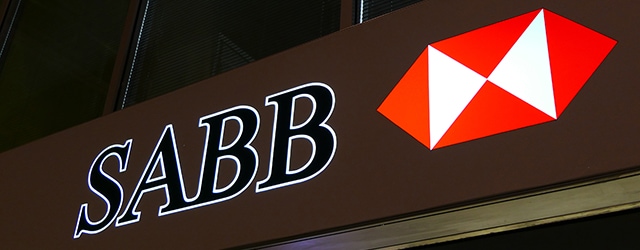The larger lending institutions benefit Gulf governments by attracting foreign investors to finance their megaprojects.

After months of talks, Kuwait Finance House (KFH) announced its acquisition of Bahrain-based Ahli United Bank in January. Both sides reached a preliminary agreement on the exchange price of shares and are waiting for regulatory approval to finalize the deal. Together, they will create Kuwait’s biggest bank and one of the region’s largest Islamic lenders, with $94 billion in assets. With this cross-border purchase, KFH expects to increase consolidated profits by more than 90% from its 2018 levels.
Last year saw other major announcements. In Saudi Arabia, Bank Alawwal and the Saudi British Bank (SABB) approved a merger to form the country’s third-largest bank, with more than $70 billion total assets. The $5 billion deal is due to close in the first half of 2019. In Qatar, Barwa Bank and International Bank of Qatar reached a similar agreement to build Lusail Bank, a $22 billion Shariah-compliant entity.
This unprecedented wave of consolidation came only a year after First Gulf Bank and National Bank of Abu Dhabi came together to form First Abu Dhabi Bank, the largest lender in the United Arab Emirates (UAE), with $188 billion in total assets.
Can we expect more? Yes, definitely. At least ten other Gulf Cooperation Council (GCC) lenders are currently involved in merger and acquisition (M&A) talks. Saudi Arabia’s biggest lender, National Commercial Bank, started consultations to buy Riyad Bank, a smaller local competitor. The deal would bring the Saudi leader’s total assets to $182 billion. In the UAE, Abu Dhabi Commercial Bank, Union National Bank and Al Hilal Bank are discussing a unique three-way merger that would create the Council’s fifth-largest lender, with more than $110 billion in assets.
On a smaller scale, deals are underway in Oman. Bank Dhofar and National Bank of Oman could soon form the country’s second-largest lender, with $20 billion in assets; Alizz Islamic Bank and Oman Arab Bank also have signed a memorandum of understanding for an imminent $7 billion merger. Although these may not all go through, many other institutions have expressed interest in M&A opportunities.
If so many banks are looking to merge, it may be because the GCC is highly overbanked (table, p. 70). Bahrain has more than 100 banks for a population of 1.5 million. “Slow growth and subdued credit demand in the region is one of the biggest drivers of consolidation,” Ashraf Madani, a vice president and senior analyst at Moody’s rating agency, commented in a recent report.
Until now, Gulf banks prospered mainly thanks to government deposits backed by oil revenues. With lower oil prices, profit margins are shrinking and small lenders find themselves vulnerable. “It’s not good news that the markets are suffering, but the reaction—lose control, go with somebody bigger but healthier—is the best reaction,” says Michel Accad, group chief executive officer at Al Ahli Bank Kuwait.
|
Country |
No. of Banks |
Population |
| Bahrain | > 100 | 1.5 million |
| United Arab Emirates | > 50 | 9 million |
| Saudi Arabia | 27 | 32 million |
| Oman | 20 | 4.6 million |
| Qatar | 18 | 2.6 million |
| Kuwait | 11 | 4 million |
Although M&A can result in job losses, regulators generally encourage deals because consolidated lenders have bigger lending capacities and are more attractive to foreign investors. GCC countries rely on bigger lenders and foreign investors to finance their economic diversification plans and infrastructure megaprojects.
Acquisitions are also a way for banks to scale up in a region where cross-border activity is limited. Throughout the Middle East and North Africa, the legislation for foreign bank licensing is very restrictive, both in terms of ownership and number of branches. As a result, few GCC banks operate outside of their national territory. Taking over an existing business, with its employees, branches and operations, is a great way to avoid that hassle.
“You pay more money, but you don’t start from zero,” says Accad of Kuwait’s ABK, which acquired Egyptian Piraeus Bank in 2015. “When we did the transaction, Egypt was viewed as a risky place to invest. … That uncertainty meant you could buy things at half their price. Also, Egypt has an advantage compared to the GCC countries. It tends to be underbanked.”
Egypt also tempted Emirates NBD, which bought BNP Paribas Egypt in 2012. Last year, it entered the Turkish market by buying Denizbank from Russia’s Sberbank for $3.2 billion—and thereby adding $42.8 billion to Emirates NBD’s total assets.
“As part of our normal course of business, the bank constantly explores business-expansion opportunities both domestically and internationally,” says an Emirates NBD spokesperson. “We will pursue inorganic growth where it meets our investment criteria and parameters.”
Earlier this year, Bahrain’s Arab Banking Corporation announced it was seeking to grow its regional presence through acquisitions, possibly in Saudi Arabia or North Africa. “We are just waiting for the right time and the right opportunity,” deputy Group chief executive Sael al-Waaray told Emirati newspaper The National.
Corporate M&A
The aggregated value of all M&A in the Middle East North Africa region increased by 50% in 2018 to $44 billion, up from $29.5 billion in 2017, according to international law firm Baker McKenzie.
Although the most expensive deals involve banks, corporate M&A is starting to pick up significantly in the region. Major deals include the acquisition by UAE’s Emaar Malls of leading fashion e-commerce platform Namshi. Emaar first acquired 51% of the start-up for $151 million in 2017, and completed the deal for $129 million last February.
“The majority acquisition of the company in 2017 had heralded a new era for Emaar Malls in building its online presence,” Patrick Bousquet-Chavanne, CEO of Emaar Malls, said in a statement. “Today’s acquisition underlines the acceleration of our Digital Forward strategy to leverage the growing e-commerce market in the MENA region.”
In 2017, UAE-based Majid al Futtaim, a leader in shopping malls and leisure establishments, took over Retail Arabia, the franchise owner of Giant and Gulfmart supermarkets. “E-commerce and transports are the two sectors where we are seeing more M&A,” says Philip Bahoshy, founder and CEO of Magnitt, a Dubai-based entrepreneur and investor network. “Big players acquire smaller ones to increase their footprint in the region, while small ones group together to become stronger entities and raise more funds.”
While bank M&A remains a lively game mostly among local players, the corporate sector is increasingly attracting buyers from outside the region. A turning point was Amazon.com’s 2017 acquisition of Emirati e-commerce platform Souq.com and its fintech partner Payfort. Although Souq was then valued at $1 billion, it sold for $650 million. It allowed the US giant to enter the MENA market with a functioning platform that sold over two million products. “When Amazon acquired Souq, it raised a lot of international interest,” says Bahoshy. “Investors started to look at the MENA region and see opportunities for growth.”
Other global investors have stepped in, including New York City private-equity firm General Atlantic, which took a minority stake in Dubai-based real estate platform Property Finder for $120 million in 2018, and UK-based GoCompare, which took a 10% share in Emirati financial service comparison platform Souqalmal for $2 million.
Most recently, Uber announced a $3.1 billion buyout of rival Emirati car-hailing company Careem. The deal, Uber’s largest acquisition to date, strengthens the company’s foothold in the Middle East while quelling a costly rivalry.



